Gorre Station
Deep in my gut I knew that Gorre station would require special attention. John Allen's peculiar little building was as iconic as the layout itself. But as I've said repeatedly, I'm making an adaptation, not a replica, so I wasn't going to scratchbuild a slavishly accurate structure. Still, I felt compelled to capture the feeling of the original, all the same.


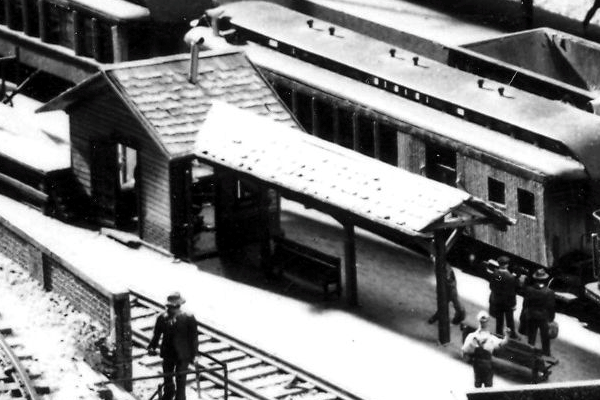
I'm glad that I waited a while to tackle it, too, because I had a sense that I'd have some sort of inspiration along the way. Which is just how it played out. It's one of those moments you can't explain: suddenly an image flashes in your mind, and things start to click. I've no idea what drew me to Miller Engineering's train station kit (#1010, below); it had nothing in common with Gorre station. But when I pulled the fret from my leftovers drawer, I started spotting certain characteristics in the detailing that seemed useful; indeed, the more I studied the kit, the more potential I sawówindow arrangements that coincided well, surface textures, size and shape of the canopy extension, and so on.
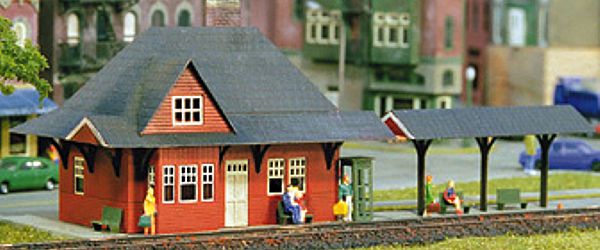
I also really liked the idea of working in brassówith such a small structure, material thickness and part size figures into the equation, particularly when it comes to corner joints and window/door openings. And being a foreground feature, it needed to be a clean, crisp build, and brass was a good choice as the modeling medium.
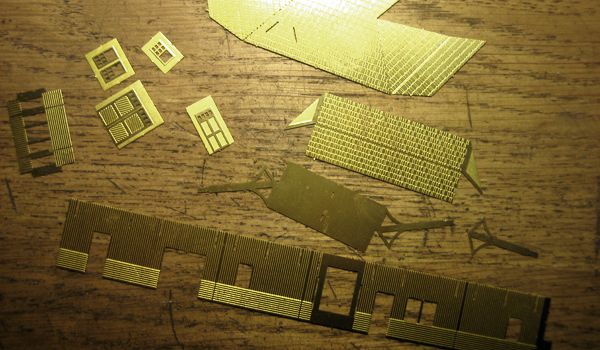
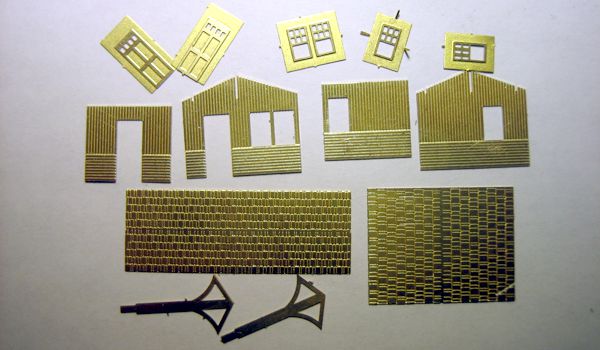
This is where I drew upon considerable experience bashing brass buildings for my James River Branch. Once I identified all of the required elements in the kit's parts, I wasted no time breaking the kit down into its components, measuring them against one another, marking up the new pieces, and cutting them down to size. The only bit of "fussy" business to get out of the way before assembly could begin was filling in the slots in two of the walls and the main roof (below); this was accomplished by soldering pieces of fret connectors into the openings.
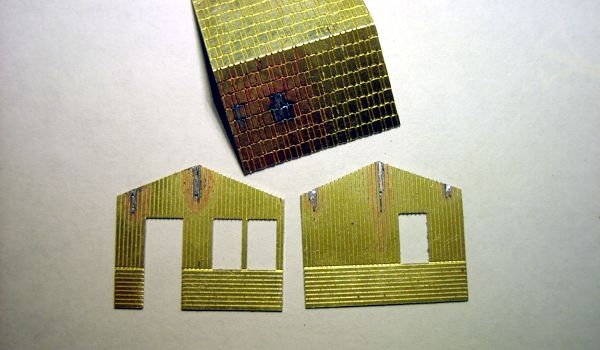
Once the roof was assembled, I went off on an unplanned tangent attaching trim parts. The edges of the raw brass just looked like raw brass, so I soldered 1/32-inch brass L-stock onto all of the edgesóten pieces in all (below). It was well worth the extra effort. One other subtle cosmetic issue I addressed was the thinness of the canopy support posts; to make them a little beefier, I laminated pairs of them together.
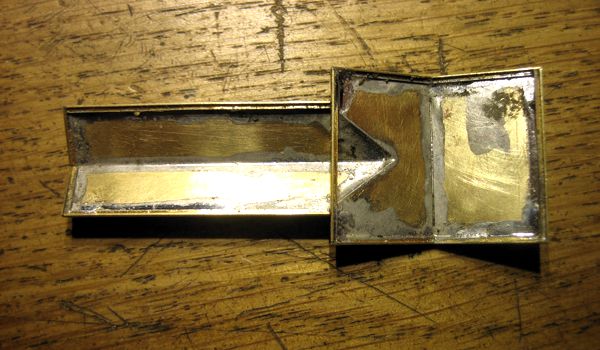
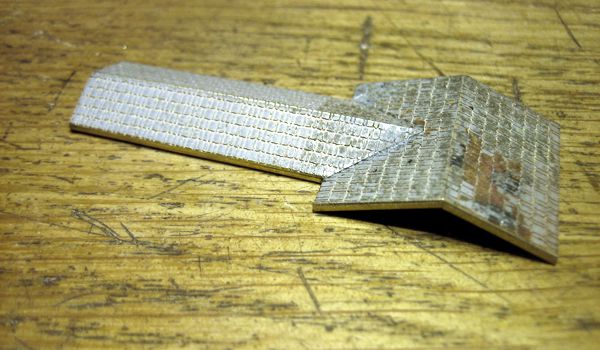

The rest of the structure went together like clockwork. After all, it's such a simple little thing, with only four small walls (above); it literally took minutes to assemble. After removing the solder resist paint, flux and other crud with acetone, I placed the station on the layout for some posing. Perfect!


Good clear color images of Gorre station are as rare as hen's teeth, so I pretty much had to wing it for finishingóbesides, John Allen's version was part brick, and mine is all wood. After a quick vinegar bath and a primer coat, I started with Light Aircraft Gray (which is really a pale tan), then carefully masked it and sprayed the trim and what was brick on the original flat ruddy brown. An India ink wash brought the light tan down to the desired tone, and highlighted the surface textures. Windows and doors were also sprayed dark brown just before installation.

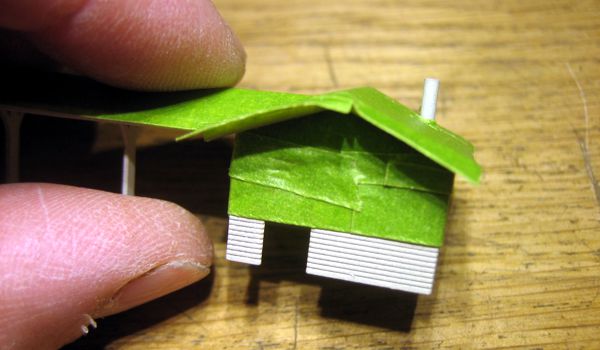


Given its numerous windows, (planned) interior lighting and foreground location, the station will eventually receive some sort of interior detailing, which I'll likely fabricate in styrene. That will come when I get closer to making the station platform, as the station interior will probably be an integral part of the platform.
I must say that, in general, this layout project has been full of pleasant surprises: so far, many of the elements that have gone into it have exceeded my expectations. Gorre station is certainly one of them!
Original Gorre & Daphetid images courtesy of Peter T. Prunka.
